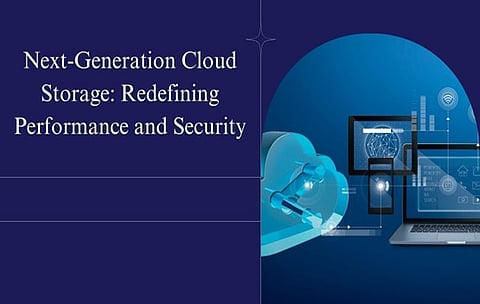

In a world increasingly driven by digital transformation, high-performance storage has emerged as the backbone of modern cloud computing. With innovations in storage architectures, security protocols, and scalability models, organizations are adapting to a rapidly evolving data landscape. Kasthuri Theja Peduru explores these breakthroughs and their implications for the future of data management.
The transition from traditional storage solutions to NVMe (Non-Volatile Memory Express) has revolutionized cloud infrastructure. NVMe significantly reduces I/O latency, enabling applications to access data at speeds 5.9 times faster than conventional storage technologies. This leap in efficiency is particularly crucial for data-intensive applications where microsecond-level response times determine system performance. With parallel processing capabilities and optimized queue structures, NVMe architectures reduce CPU overhead by up to 85%, improving both speed and energy efficiency.
As enterprises grapple with an exponential rise in data volumes, software-defined storage (SDS) offers a scalable and flexible solution. By decoupling storage software from hardware, SDS allows organizations to dynamically allocate resources in real-time, reducing provisioning times to less than 60 seconds. This transformation enhances cloud efficiency, leading to up to 65% better storage utilization while cutting operational costs by nearly 38%. The agility provided by SDS ensures seamless adaptation to evolving workloads, making it indispensable for next-generation cloud architectures.
With businesses expanding their digital footprint, distributed storage architectures have gained traction for their ability to maintain high availability across geographically dispersed data centers. These systems deliver read latencies as low as 15 milliseconds while ensuring data consistency across nodes. Furthermore, distributed storage solutions can handle over 10,000 concurrent operations per second, proving essential for mission-critical cloud applications. By integrating edge computing strategies, organizations can further reduce data access times by 72%, optimizing the end-user experience in real-time environments.
The convergence of AI and storage management is reshaping data infrastructure. AI-driven automation enhances workload optimization, resulting in a 70% improvement in storage efficiency. With technologies like NVMe over Fabrics (NVMe-oF), organizations can achieve data access latencies as low as 100 microseconds, significantly improving machine learning and deep learning workloads. The ability to support up to 64,000 concurrent I/O queues ensures that AI applications operate seamlessly, eliminating bottlenecks and maximizing system throughput.
Data breaches remain a pressing concern for enterprises, with security threats evolving in sophistication. Modern storage architectures now integrate advanced encryption, real-time threat detection, and AI-driven access control mechanisms. Studies indicate that organizations implementing automated security protocols experience 42% lower breach-related costs. Additionally, HIPAA-compliant storage solutions have demonstrated a reduction in data, underlining the impact of intelligent compliance monitoring on enterprise security.
Edge computing is transforming data processing by bringing computation closer to the source, reducing latency and improving efficiency. This shift is particularly crucial for IoT networks and real-time analytics platforms, where immediate data processing is essential. Edge-enabled storage systems can achieve latencies below 10 milliseconds while seamlessly managing up to 10,000 connected devices per square kilometer. Additionally, these systems optimize resource utilization, cutting energy consumption by up to 25%. As organizations embrace edge computing, it becomes a cornerstone of sustainable, high-performance storage strategies, ensuring scalability, security, and operational resilience in the digital age.
The storage industry is on the brink of groundbreaking advancements, including DNA-based storage, which offers a theoretical density of 215 petabytes per gram. Simultaneously, innovations in Storage Class Memory (SCM) are narrowing the gap between volatile and non-volatile memory, delivering speeds 1,000 times faster than traditional SSDs. As organizations prepare for the next wave of digital transformation, investing in high-performance storage solutions will be crucial in maintaining a competitive edge.
In conclusion, Kasthuri Theja Peduru's insights into high-performance storage underscore the importance of innovation in cloud computing. As technology continues to evolve, the integration of cutting-edge storage architectures will define the future of data management, ensuring security, efficiency, and scalability in an increasingly digital world.
